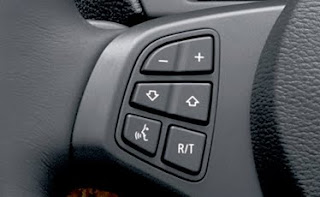 NEW YORK - General Motors Corp. and Segway today demonstrated a new type of vehicle that could change the way we move around in cities.
NEW YORK - General Motors Corp. and Segway today demonstrated a new type of vehicle that could change the way we move around in cities.Dubbed Project P.U.M.A. (Personal Urban Mobility and Accessibility), GM and Segway are developing an electrically powered, two-seat prototype vehicle that has only two wheels. It could allow people to travel around cities more quickly, safely, quietly and cleanly - and at a lower total cost. The vehicle also enables design creativity, fashion, fun and social networking.
GM and Segway announced their collaboration, while demonstrating the Project P.U.M.A. prototype in New York City this morning.
“Project P.U.M.A. represents a unique solution to moving about and interacting in cities, where more than half of the world’s people live,” said Larry Burns, GM vice president of research and development, and strategic planning. “Imagine small, nimble electric vehicles that know where other moving objects are and avoid running into them. Now, connect those vehicles in an Internet-like web and you can greatly enhance the ability of people to move through cities, find places to park and connect to their social and business networks.”
Trends indicate that urbanization is growing, and with that comes increased congestion and more competition for parking. Cities around the world are actively looking for solutions to alleviate congestion and pollution. Project P.U.M.A. addresses those concerns. It combines several technologies demonstrated by GM and Segway, including electric drive and batteries; dynamic stabilization (two-wheel balancing); all-electronic acceleration, steering and braking; vehicle-to-vehicle communications; and autonomous driving and parking. Those technologies integrate in Project P.U.M.A. to increase mobility freedom, while also enabling energy efficiency, zero emissions, enhanced safety, seamless connectivity and reduced congestion in cities.
“We are excited to be working together to demonstrate a dramatically different approach to urban mobility,” said Jim Norrod, CEO of Segway Inc. “There’s an emotional connection you get when using Segway products. The Project P.U.M.A. prototype vehicle embodies this through the combination of advanced technologies that Segway and GM bring to the table to complete the connection between the rider, environment, and others.”
Project P.U.M.A. vehicles will also allow designers to create new fashion trends for cars, and to focus on the passion and emotion that people express through their vehicles while creating solutions that anticipate the future needs of urban customers.
The Project P.U.M.A. prototype vehicle integrates a lithium-ion battery, digital smart energy management, two-wheel balancing, dual electric wheel motors, and a dockable user interface that allows off-board connectivity. The result is an advanced and functional concept that demonstrates the capabilities of technology that exists today.
Built to carry two or more passengers, it can travel at speeds up to 35 miles per hour (56 kph), with a range up to 35 miles (56 km) between recharges.
Since the introduction of the Segway Personal Transporter (PT), Segway has established itself as the leader in the small electric vehicle space. Its approach to congestion and environmental challenges is balanced with a strong understanding of the functional needs of its customers, enabling them to do more with less. Segway has delivered more than 60,000 lithium-ion batteries to the market.
GM has been a leader in “connected vehicle” technologies since it introduced OnStar in 1996. Today, this on-board communications package connects six million subscribers in North America to OnStar safety and security services. GM has also pioneered vehicle-to-vehicle (V2V) communications systems and transponder technology. These and additional connected vehicle technologies could ultimately enable vehicles that don’t crash and drive themselves.
“Imagine moving about cities in a vehicle fashioned to your taste, that’s fun to drive and ride in, that safely takes you where you want to go, and “connects” you to friends and family, while using clean, renewable energy, producing zero vehicle tailpipe emissions, and without the stress of traffic jams,” said Burns. “And imagine doing this for one-fourth to one-third the cost of what you pay to own and operate today’s automobile. This is what Project P.U.M.A. is capable of delivering.”
Source: General Motors








































